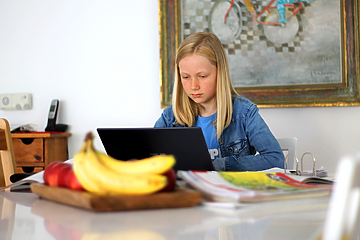As a parent, I know how challenging it can be to get kids to eat healthy foods. It can feel like a constant battle to convince them to eat their vegetables or try new foods. But as we all know, good nutrition is essential for children’s growth and development.
So, how can we make healthy eating fun and exciting for kids? That’s what we’ll explore in this article. We’ll share creative ideas for making food more appealing to children, from artistic fruit and vegetable skewers to healthy substitutions for favorite foods. We’ll also discuss the impact of nutrition on learning and overall health and well-being.
By the end of this article, you’ll have a newfound appreciation for the power of good nutrition and a toolkit of ideas to help you get your kids excited about eating healthy. Let’s get started!
Key Takeaways
- Nutrition has a significant impact on a child’s ability to learn, and making healthy food the only option at home increases kids’ nutritional intake.
- Creative ways to get kids to eat healthy food include putting it into a shake, being artistic with it, using dips, substituting healthier foods for unhealthy ones, freezing it, making it small, and making healthy snacks from scratch.
- A grain mill is a great investment for a family’s nutrition, as milling your own flour and baking items immediately locks in the maximum amount of nutrition within the wheat itself.
- Picky eaters tend to dislike chunky or textured foods, so pureeing vegetables into sauces and soups makes them less noticeable, and making healthy snacks from scratch is a great way to get kids involved in cooking and learning cooking skills.
Impact on Learning
As a parent, I’ve seen firsthand how incorporating essential nutrients into my child’s diet has improved their ability to learn and focus. Nutrition truly is the key to unlocking a child’s academic potential.
One of the most common issues that can negatively impact a child’s ability to learn is having a short attention span. This can be caused by a lack of iron in their diet, but it can also be remedied by incorporating essential fatty acids into their meals.
Essential fatty acids, such as omega-3 and omega-6, are crucial for brain development and function. Studies have shown that children who consume more of these fatty acids have better cognitive function and are less likely to have behavioral issues.
Incorporating foods such as salmon, nuts, and seeds into their meals can provide a healthy dose of essential fatty acids and help improve their ability to focus and learn. As a parent, it’s important to be mindful of the nutrients our children are consuming and to make sure they’re getting everything they need to succeed academically.
Creative Food Ideas
I enjoy making food fun for my children by using artistic presentations, dips, and freezing options to encourage them to eat a variety of nutritious foods.
One of my favorite kid-friendly recipes is creating fruit and cheese skewers, which not only look visually appealing but also provide a good source of protein and vitamins.
Another fun food presentation is turning vegetables into fun shapes, such as using a cookie cutter to make heart-shaped carrots or star-shaped cucumbers.
I also love using dips like hummus or guacamole to make vegetables more palatable for my kids.
Making healthy food fun for kids is not only beneficial for their physical health but also for their emotional well-being.
When children see that healthy food can be fun and enjoyable, they’re more likely to develop a positive relationship with food and make healthier choices in the future.
As a parent, I want to instill good eating habits in my children, and using creative food ideas is a great way to do so.
How Can I Secure Advance Payments for Homeschool Activities to Ensure My Child’s Participation?
As a parent, securing advance payments for homeschool activities is a prudent step towards ensuring your child’s participation. By requesting upfront payment, you can avoid any last-minute cancellations or no-shows, allowing for more accurate planning and resource allocation. Additionally, advance payments serve as a commitment from both parties, reinforcing the importance of participating in homeschool activities and promoting a sense of responsibility.
Homemade Snacks
Whipping up my own homemade snacks has become a favorite pastime in my household. Not only does it allow me to experiment with new ingredients and flavors, but it also provides an opportunity for my kids to get involved in the cooking process.
Getting kids involved in the kitchen not only helps them develop their cooking skills, but it also encourages them to try new foods and take ownership of their nutrition choices. The benefits of homemade snacks are endless.
Not only are they healthier than store-bought options, but they also provide an opportunity to incorporate more fruits, vegetables, and whole grains into our diet. Plus, homemade snacks can be tailored to meet individual taste preferences and dietary restrictions.
By making our own snacks, we have more control over the ingredients we use and can avoid unnecessary preservatives and additives. Overall, incorporating homemade snacks into our diet has been a fun and nutritious way to keep our family engaged in healthy eating habits.











